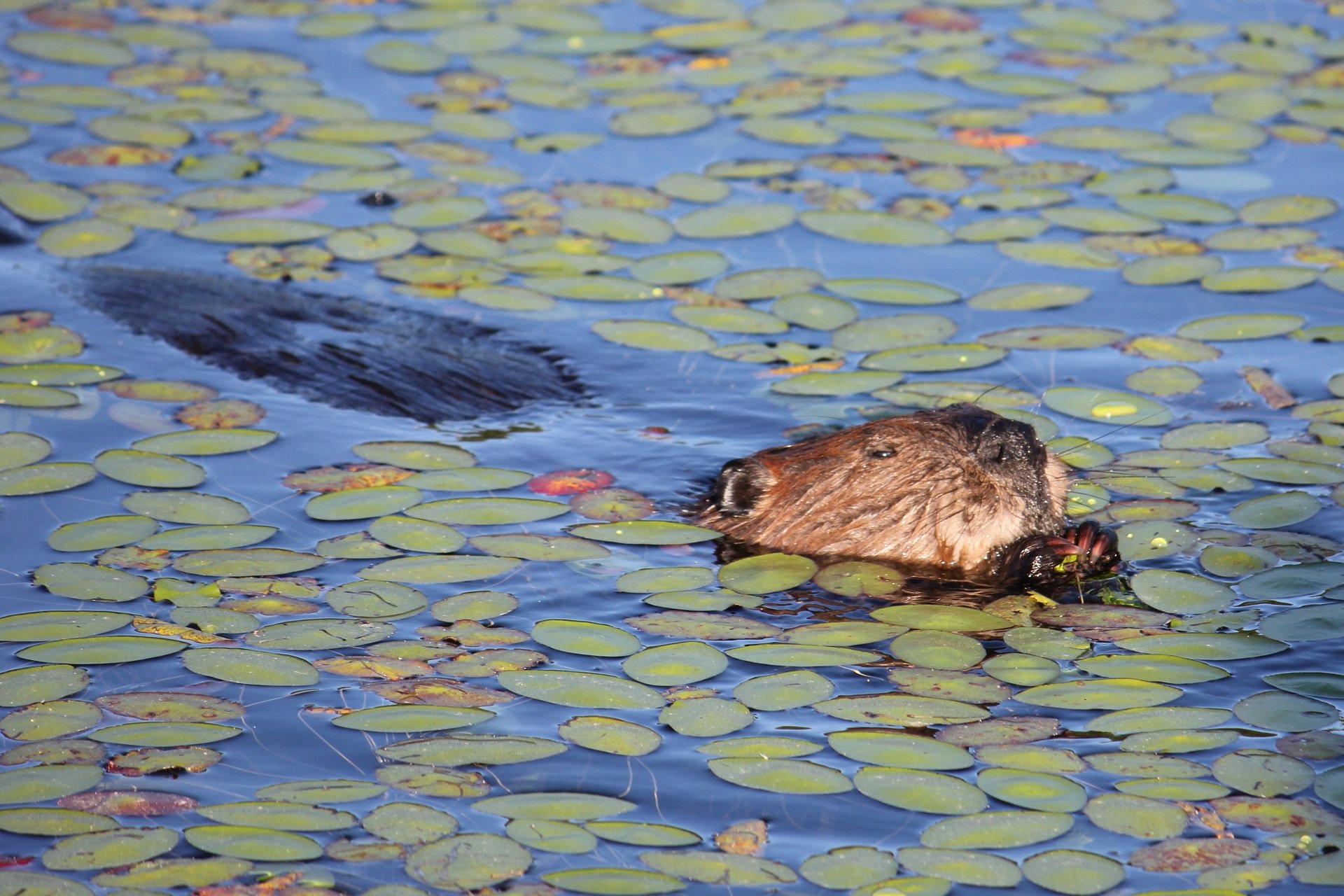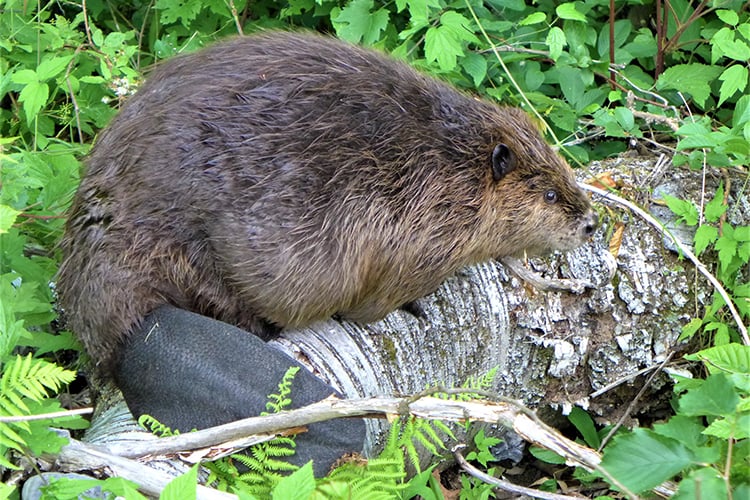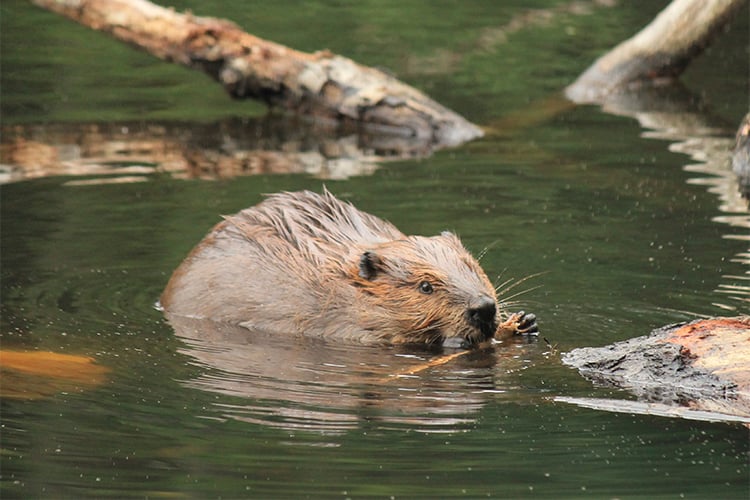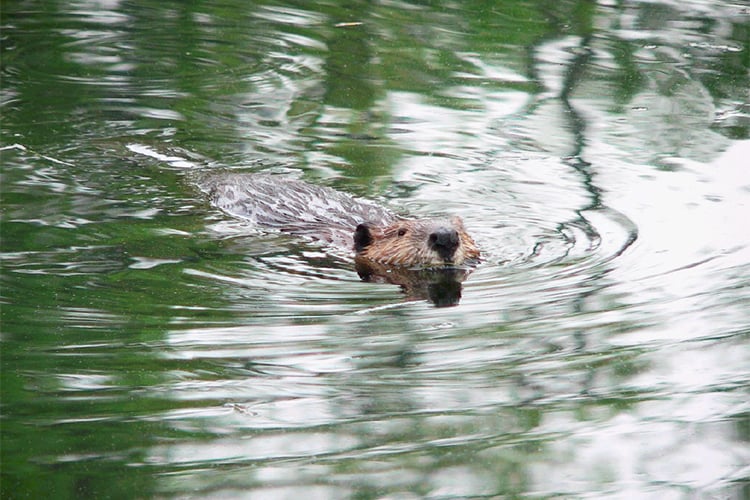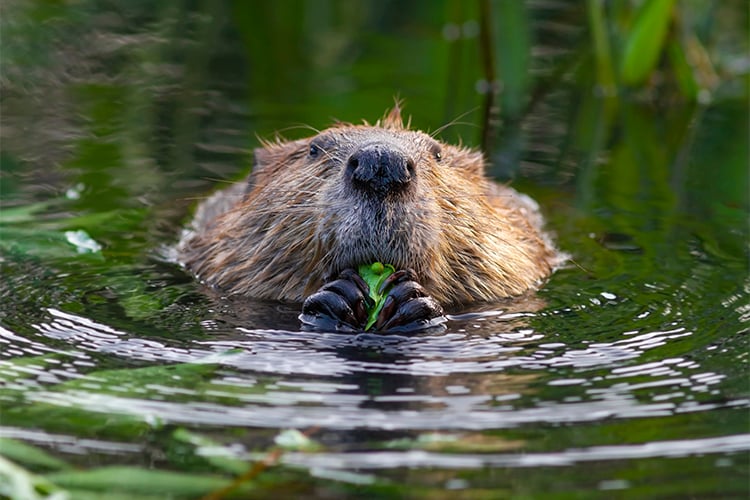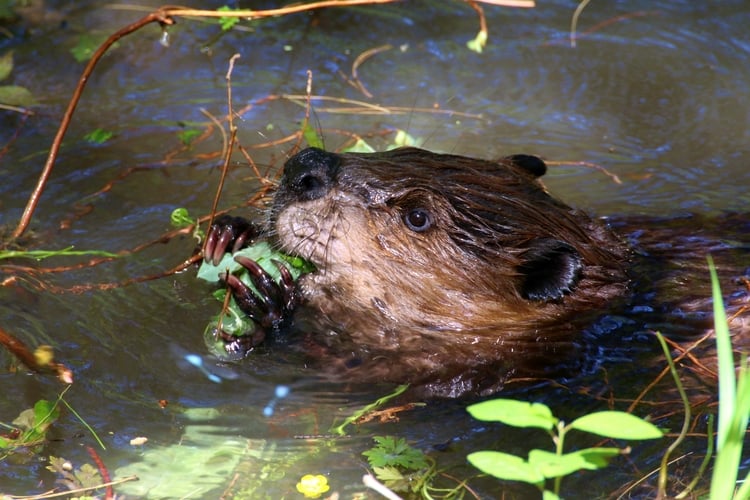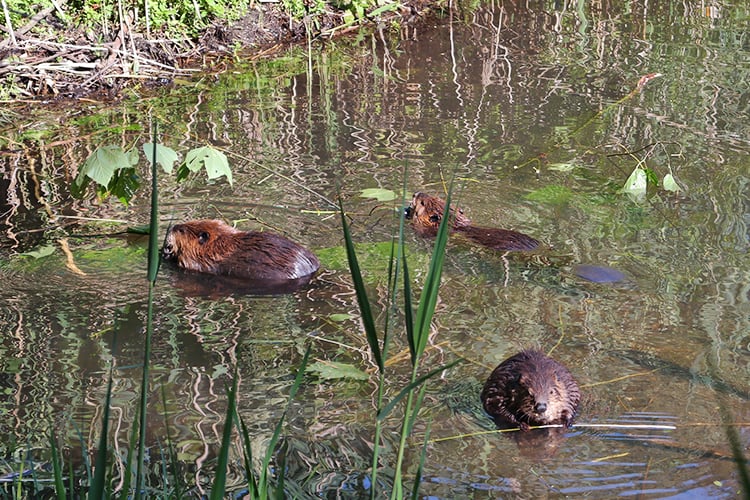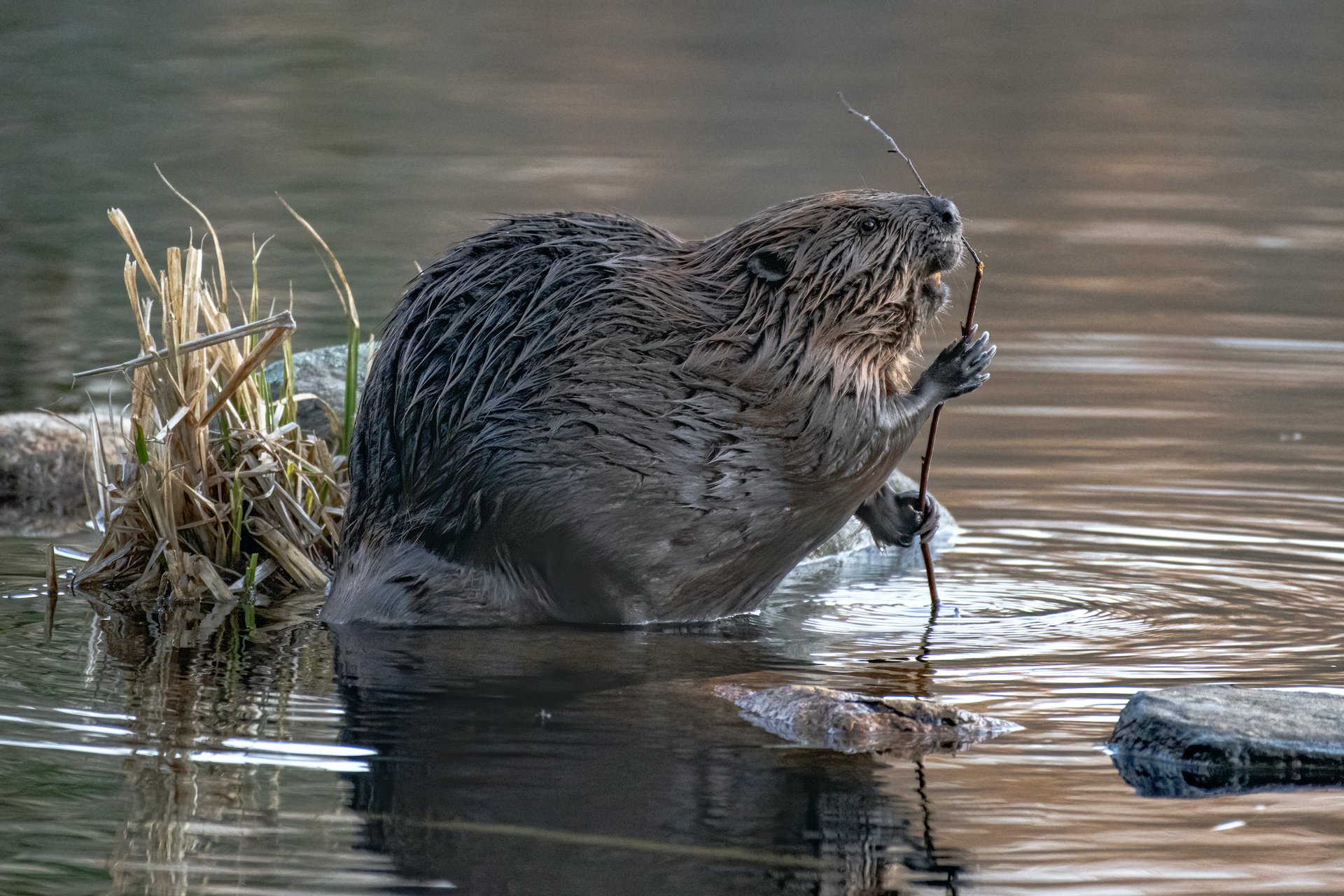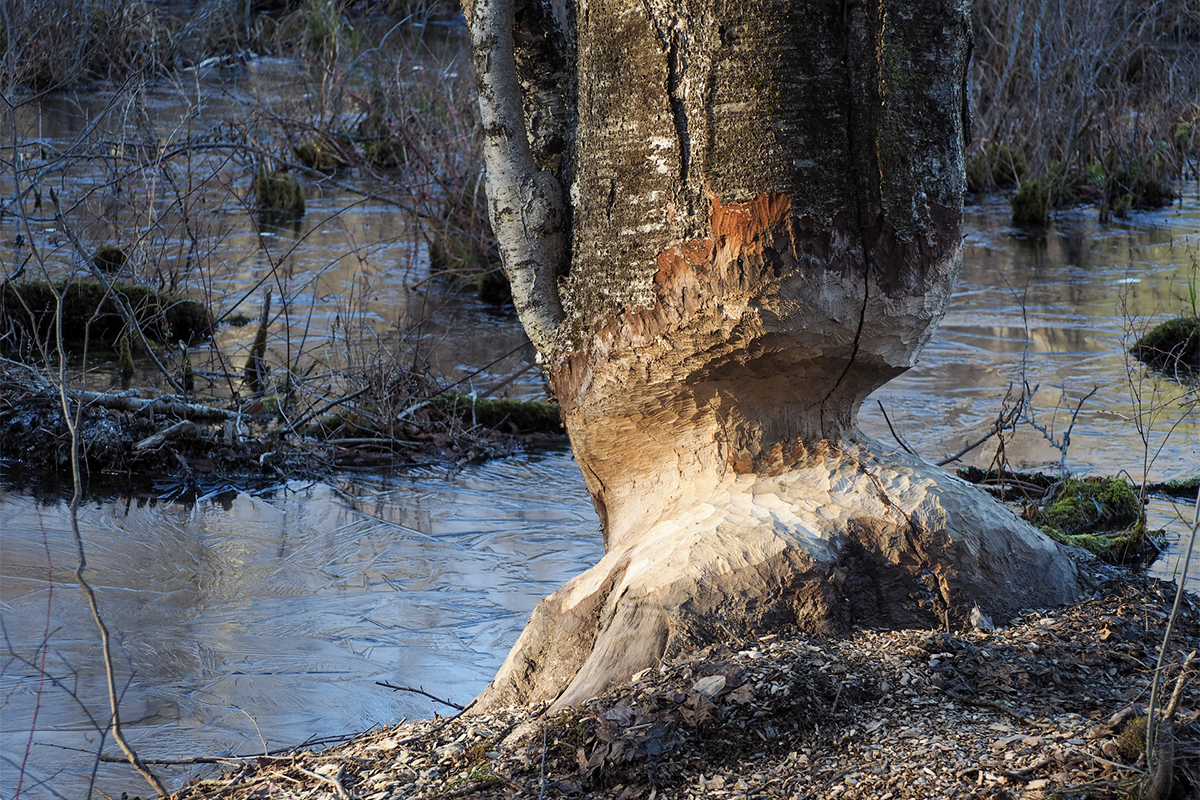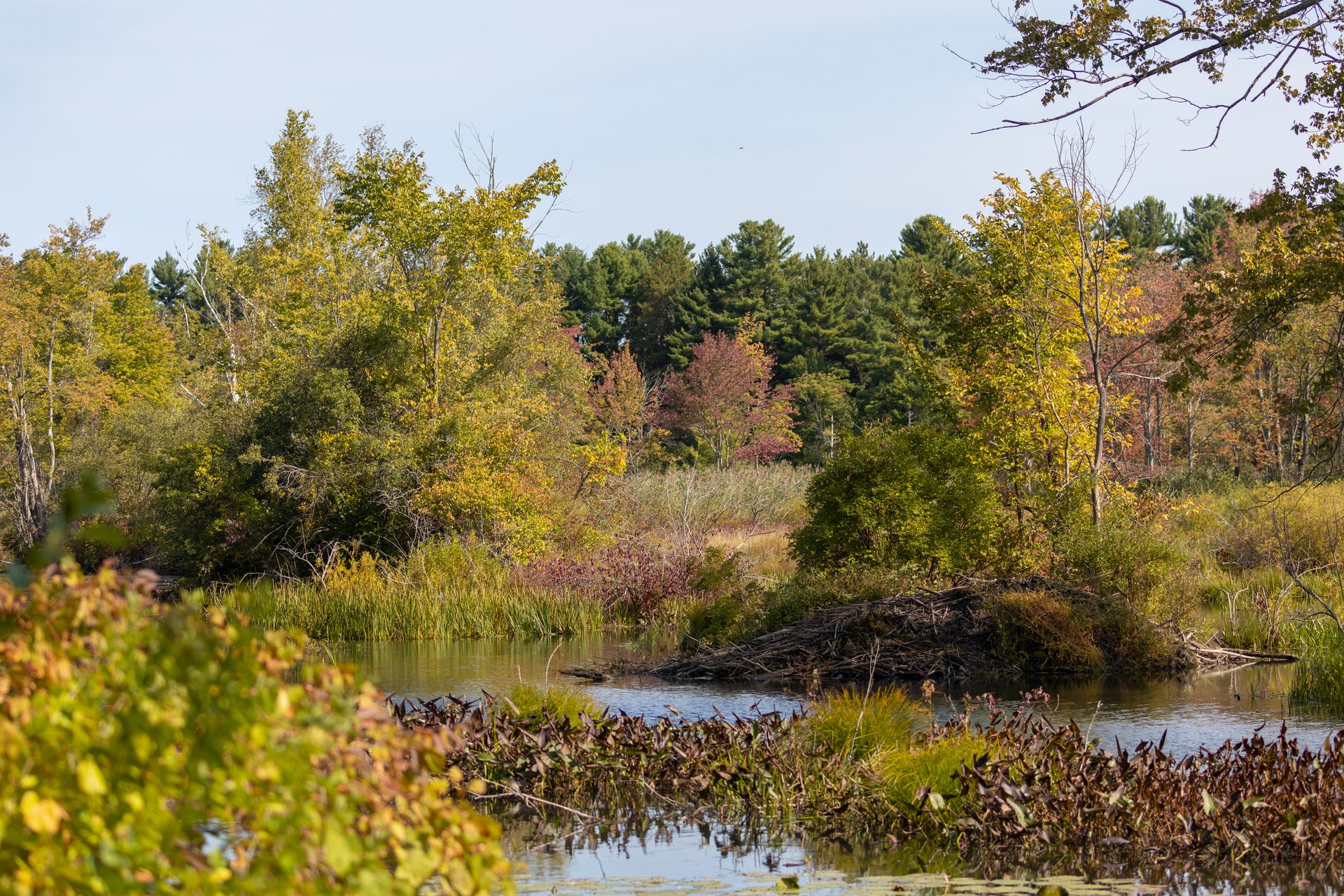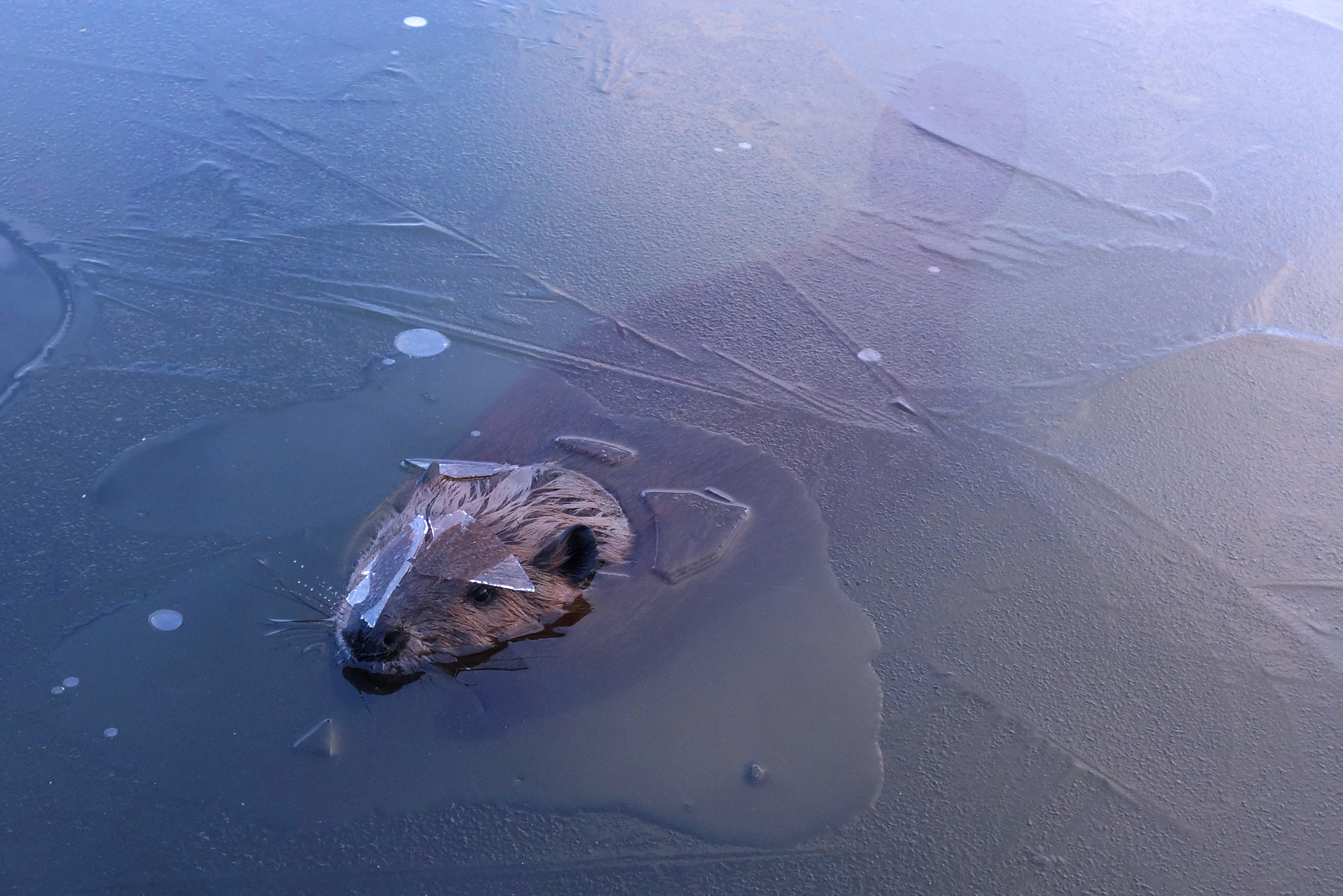Beavers
Beavers are the largest member of the rodent family in North America. Before colonization by European settlers, the beaver thrived in Massachusetts—but unregulated hunting, trapping, and extensive deforestation resulted in their eradication by the end of the 18th century. To help restore beaver populations, three beavers were brought from New York and released at what is now Mass Audubon’s Pleasant Valley Wildlife Sanctuary in 1932. Now, beavers are common throughout the state.
How to Identify Beavers
Beavers are easily recognizable by their long, broad tail and noticeably large, sharp front incisor teeth. They are well adapted for their aquatic environment with broad, flat tails (at a length of 12 to 20 inches) that they use to steer along with large, webbed hind feet. They use their small and un-webbed front feet for carrying and digging. Beavers sport brown, thick fur with waterproof underfur. Beavers measure between 32 to 48 inches and weigh anywhere from 27 to 67 pounds but could potentially grow larger.
The most distinctive sign of a beaver is the dramatic "pencil points" of gnawed tree trunks and the lodges and dams they build. Another tell-tale sign that you are seeing (or hearing) a beaver is by listening for a loud slapping sound caused by their large flat tails hitting the water. They do this to warn the rest of their colony of potential danger or threat.
How to Tell a Beaver from a Muskrat
Even though muskrats and beavers are only distantly related, they can be hard to tell apart. Here’s how to tell these animals apart when you spot them while hiking or paddling:
- Size: Beavers are much larger than muskrats. Adult muskrats weigh up to about four pounds, whereas beavers average over forty pounds.
- Swimming Pattern: While swimming at the surface, muskrats expose much of their heads and backs. Their long, slender tails have triangular cross-sections, and make unmistakably clear cuts through the water. Beavers have flattened tails that they sweep up and down while swimming, but you typically won’t see more than just a beaver’s head above the water’s surface.
- Diet: Muskrats eat plants such as cattails, and sometimes consume animals such as crayfish. Beavers are exclusively vegetarian and eat the soft tissue under tree bark. If you see a stump that has been chiseled into a point, the culprit was a beaver.
- Structures: Beavers build dams in order to block off streams and create ponds, and muskrats do not. Both animals make lodges, which are dome-shaped structures where they sleep and give birth. However, muskrat lodges are smaller than beaver lodges, and they’re mostly made of plants like cattails, whereas beaver lodges are full of large sticks and logs. Either animal may also make a home by digging into a stream bank.
Where Can You Find Beavers?
Beavers can be found in wetlands across Massachusetts, except Cape Cod. Before European settlement, beavers could be found on Cape Cod. Since there are plenty of suitable habitats in the southeastern part of the state, beavers could reestablish populations in that area in the coming years.
Beaver Behavior
What Do Beavers Eat?
Beavers are vegetarians, feeding on numerous plants and trees in the summer. In the winter they feed on the inner bark of trees, particularly aspen, willow, birch, and alder. In the fall, they collect edible branches and anchor them in the mud at the bottom of the pond near the entrance to their lodge. In the winter, the colony stays inside the lodge, only leaving it to gather the cached food from the bottom of the pond.
Beaver Life Cycle
A family unit—called a colony—consists of two adults, the young born that year, and the young of the previous year. When beavers are two years old, they become sexually mature and are driven off by the adults in the colony to seek mates and find territories of their own.
Beavers are typically monogamous and, unlike many mammals, the male stays with the female year-round. They mate between January and March, and the kits are born four months later. The litter can contain between one and nine kits, but a typical litter is four.
The kits are born fully furred with their eyes open and become skillful swimmers by the time they reach one week old. They're able to eat vegetation at two to three weeks and are weaned by three months.
Beaver Dams
Beavers are unique among mammals in that they alter their habitat to meet their needs by damming streams to form deep ponds that won’t freeze at the bottom in winter. Within these ponds, they build lodges to protect the young in summer and the entire colony in winter. Lodges are large structures, from 15 to 40 feet across and three to six feet above the water. They line the living space (located above the waterline) with dry plant material and the entrance is located underwater. The entrance to the lodge is underwater, which affords protection from most predators except for humans and black bears.
They start to make the dams by gnawing down branches and trees. Then, they chew the large chunks of wood into smaller pieces and drag it into the water. Beavers then systematically add sticks, branches, and mud until the structure is about 2.5–3 feet tall.
These dams don’t just help beavers, they also play a part in the restoration of lost wetlands, providing habitat and food for a wide variety of plants and animals. Because of the flooding beavers create, trees often die off, providing nesting sites for Great Blue Herons, Wood Ducks, Tree Swallows, and other birds. These new ponds become homes to amphibians, turtles, fish, otters, muskrats, and other animals. Once beavers have exhausted their food supply, they move on to a new place. Subsequently, the dam erodes and the pond drains, creating an early successional habitat that is ideal for their preferred food species (Aspen, Willow, Birch, and Alder trees). As these tree saplings grow larger, the stage is set for beavers to re-colonize the site. Without beavers, there would not only be fewer wetlands but also less early successional forest and shrubland which is an important piece of forest biodiversity in a region that consists mainly of closed canopy forests.
Beaver-created wetlands also enhance human habitat by storing and slowly releasing floodwater, which controls downstream flooding. They improve water quality by removing or transforming excess nutrients, trapping silt, binding and removing toxic chemicals, and removing sediment. And finally, flooded areas can also recharge and maintain groundwater levels and provide flow to streams even during droughts.
Can You Get Rid of a Beaver Dam?
Relocating wildlife is illegal in Massachusetts. It's also illegal in Massachusetts to disturb beaver dams or other structures without permits (the same applies to muskrat structures). To get a permit, contact your local board of health.
Threats to Beavers
Habitat loss and fragmentation are one of the biggest threats to beaver populations. Polluted waterways can be caused by washed-out septic systems, untreated human sewage discharged into waterways, cabin toilets, and contaminated feces from campers and backpackers in rivers and streams.
How Mass Audubon Helps Beavers
Beavers are required to create an abundant and diverse aquatic and riparian (water bank) ecosystem. Mass Audubon is helping beavers by protecting their habitats and waterways to give beavers the space that they need to thrive. You can help us conserve and protect beavers by becoming a member today.



